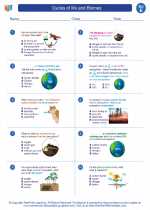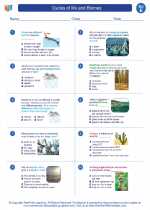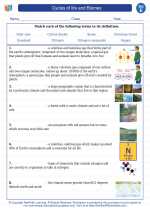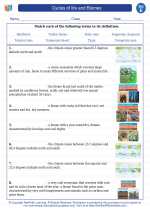Grasslands
Grasslands are ecosystems dominated by grasses and other herbaceous plants, with few trees or shrubs. They are found in various parts of the world and are known by different names, such as prairies in North America, steppes in Eurasia, and pampas in South America.
Grasslands are typically found in areas with semi-arid to sub-humid climates, where there is not enough rainfall to support the growth of trees, but sufficient moisture to support grasses. They are also characterized by seasonal droughts and fires, which play a crucial role in maintaining the grassland ecosystem.
Types of Grasslands
There are two main types of grasslands: tropical grasslands, also known as savannas, and temperate grasslands.
- Tropical Grasslands: Savannas are characterized by scattered trees and a grassy understory. They are found in tropical regions and are home to a diverse array of wildlife, including large herbivores such as elephants, giraffes, and zebras.
- Temperate Grasslands: These grasslands are found in temperate regions and are known for their harsh winters and hot summers. They are home to grazing animals such as bison, antelope, and prairie dogs.
Study Guide
Here are some key points to remember about grasslands:
- Describe the characteristics of grasslands, including their vegetation and climate.
- Explain the importance of fire in maintaining grassland ecosystems.
- Compare and contrast tropical grasslands and temperate grasslands, including their geographical locations and wildlife.
- Discuss the human impacts on grasslands, such as agriculture and urbanization, and their implications for the ecosystem.
- Identify the conservation efforts aimed at protecting grassland habitats and their biodiversity.
Remember to study the unique features of grasslands, their ecological significance, and the challenges they face due to human activities. Understanding these concepts will help you grasp the importance of preserving grassland ecosystems for future generations.
Now that you have a basic understanding of grasslands, you can explore further through research, field trips, and hands-on activities to deepen your knowledge of this fascinating ecosystem.
[Grasslands] Related Worksheets and Study Guides:
.◂Science Worksheets and Study Guides Fifth Grade. Cycles of life and Biomes

 Worksheet/Answer key
Worksheet/Answer key
 Worksheet/Answer key
Worksheet/Answer key
 Worksheet/Answer key
Worksheet/Answer key
 Worksheet/Answer key
Worksheet/Answer key
 Vocabulary/Answer key
Vocabulary/Answer key
 Vocabulary/Answer key
Vocabulary/Answer key
